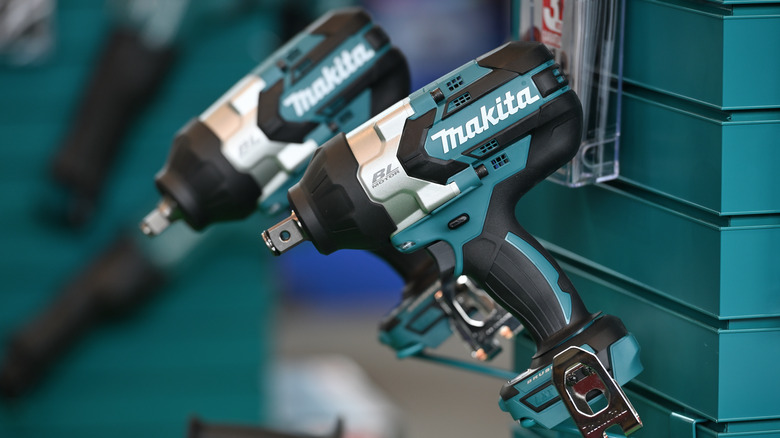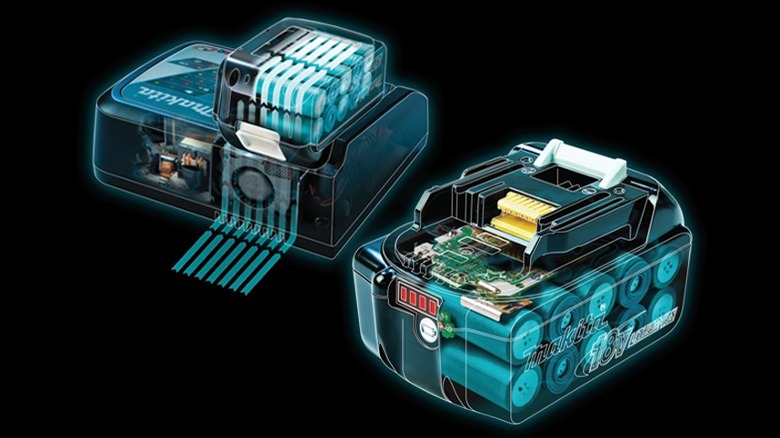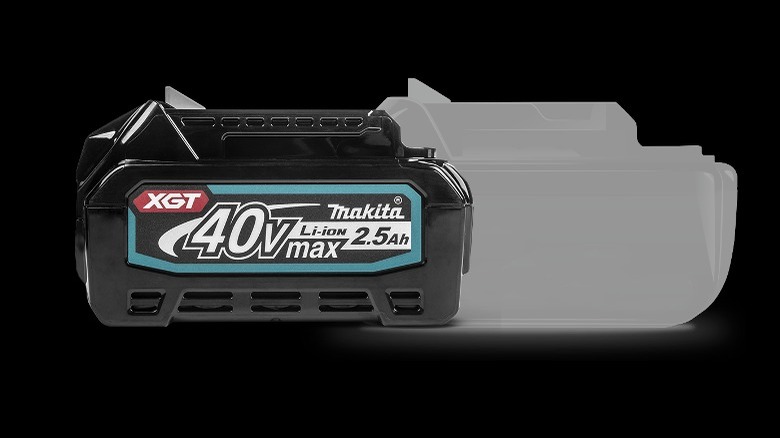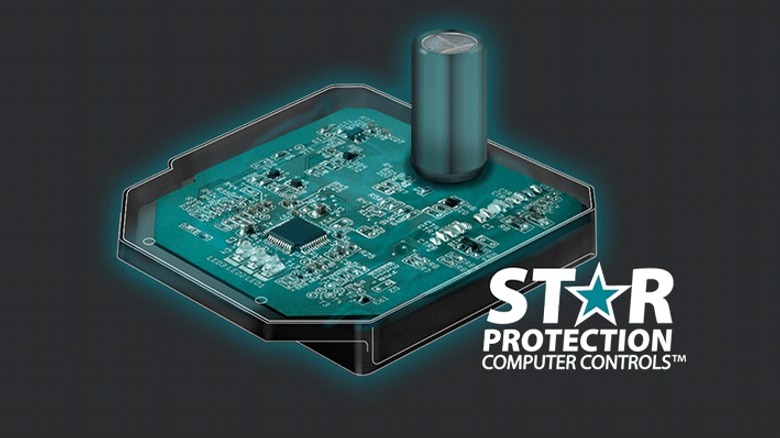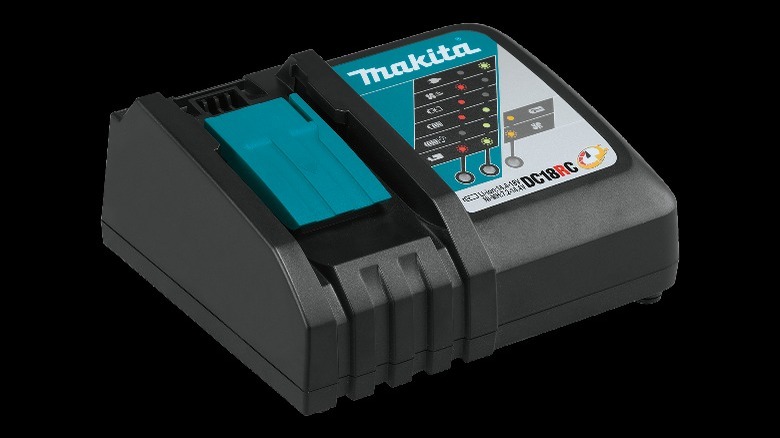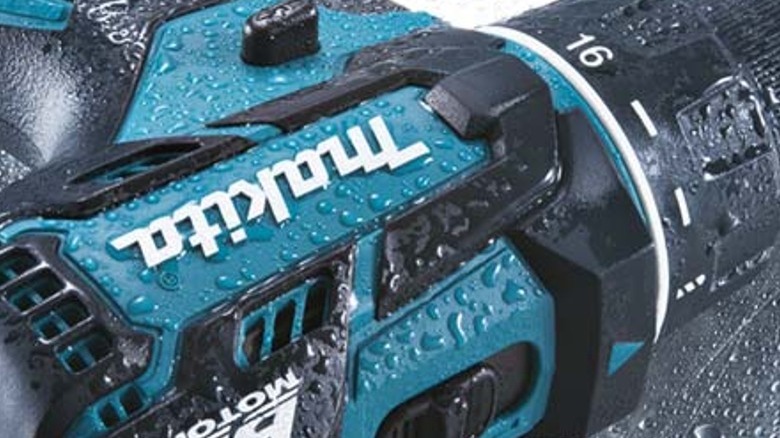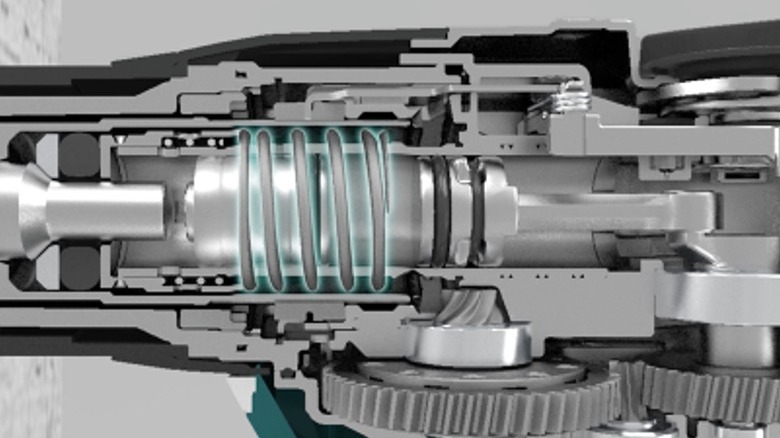6 Technologies You'll Only Find On Makita Tools
Makita is a Japanese-owned tool company that has existed since 1915. Not only has it survived over a century of business, but Makita is often counted as one of the best power tool brands on the market. The company has managed to hold its place in the public eye in a few ways. Consistent quality and reasonable prices are chief among them, but the company has always made a point of being at the forefront of innovation.
Makita's R&D department has produced several unique technologies. Makita then patented these, ensuring its tools would be the only ones to have them. There are dozens of these specialized technologies ingrained in the company's tools. Many of them were designed to improve the efficiency of Makita's cordless battery systems, but other technologies cover everything from anti-vibration tech to the filtration systems in Makita's shop-vacs. Some of them are relatively minor features, but others have grown to become major selling points for the brand since they are present in all of Makita's most popular power tools. Here are six of the most impressive technologies you can only find on Makita brand tools.
LXT Lithium-Ion
Just about every power tool company has its proprietary battery system. In fact, this is one of the biggest defining factors for many tool buyers when choosing which brand will populate a majority of their garage. Power tool batteries often cost nearly as much as the tools themselves, but they usually work on tools across the brand so long as they require the same voltage. This means choosing a brand with a good battery system is a must.
Makita was the first brand to introduce 18V lithium-ion tools in 2005, and the company's current line of cordless tools uses its LXT Lithium-Ion batteries–the world's largest 18V slide-style battery system. According to Makita's website, the "purpose-built motors, battery technology, and enhanced communications work together to deliver unmatched power, speed, and run time."
These batteries come in a variety of amperages. Makita offers 2.0Ah, 3.0Ah, 4.0Ah, 5.0Ah, and 6.0Ah varieties, but one of the more unique things about them is that you can actually combine any two 18V LXT batteries to power a 36V tool. This expands their versatility since it means that Makita tool owners won't need separate batteries for low and mid-voltage power tools. This is one of the main reasons Makita can offer over 325 cordless tools powered by a single-voltage battery system.
XGT
The LXT system is an extremely well-regarded solution for most hand tools, and it's probably the only system most Makita tool users will need for basic weekend repairs and home maintenance. That said, Makita also offers another battery system for some of its pro-grade tools that need a little more juice. "The LXT System handles most applications, but for high-demand applications that use corded, gas, or air, the XGT System delivers higher-powered solutions," says Makita. "With 40V max and 80V max XGT Products, pros can fully experience a battery-powered job site."
The new XGT battery system is based on a 40V max battery, which isn't much stronger than the 36V solution offered by the LXT system. Still, Makita has made it so that these batteries can be doubled up to create a combined 80V power source for the most demanding cordless equipment. This goes beyond hand tools and can even power things like demolition hammers and miter saws. These batteries are available in 2.5Ah, 4.0Ah, and 5.0Ah amperages. They also have the added perk of working on the same charging system as the LXT batteries, so you don't need to have a ton of chargers cluttering up your garage. Only about a third of Makita's products use the XGT system, but it might be a worthwhile investment for pros who are heavily invested in Makita brand tools and don't want to be confined to corded tools.
STAR Protection Computer Controls
As impressive as Makita's battery systems are on their own, a couple of other patented technologies are embedded in them that add new and exciting functionalities. Some of the best can even affect how the batteries communicate with the tools they're designed to work with. The most heavily marketed of these features is Makita's STAR Protection Computer Controls.
STAR is a communications technology that's designed to monitor the flow of power from the battery to the tool during use. It has a built-in shut-off switch that protects tools when the flow of power leads to effects that might negatively impact the tool's safety and performance. Makita states that STAR Protection allows "the tool and battery to exchange data to protect against overloading, overdischarging and overheating. If STAR detects conditions that threaten to overload, overdischarge or overheat the tool or battery, the tool will automatically stop." So, if a tool reaches dangerous levels in any of these categories, it will automatically shut off before any damage can be done to the tool or the user. When this happens, all you need to do is either wait for the tool to cool off and restart it, charge the battery, or swap it out for a fresh one. This can save your tools from burning out and it can protect you from any potential injury if there's something wrong with your tool's power flow.
Active 3 Controls
Next, we have Active 3 Controls. This is another technology that monitors the transfer of power. Only instead of monitoring the flow from the battery to the tool, this system is designed to monitor the flow of electricity from the charger to the battery. It does this so that Makita's chargers can power up its batteries more efficiently, maximizing the flow of power while simultaneously ensuring the battery's integrity.
"The battery and charger communicate through the built-in chip inside the battery and exchange information to monitor and control current, voltage and temperature," says Makita. "The efficient management of these three conditions is engineered to help optimize the charging process, so your battery spends more time working and less time sitting on the charger." By monitoring these three variables via the Active 3 Controls, Makita's smart chargers are able to allocate as much current as possible to charge its batteries quickly without suffering any potential damage to the battery. This might not matter for those who plan on having tons of batteries in reserve, but it's a nice touch for those who only have one or two batteries and want a quick turnaround on their charging times.
XPT
Of course, not all of Makita's technologies are focused on the batteries. Some of them are more concerned with the tool's design–particularly when it comes to preventing breakage. Power tools often have to endure some pretty harsh conditions. They get beaten, battered, and knocked around a lot more than most electronics, so they have to have some pretty durable casing. They also tend to get wet and dirty since you aren't usually using them in anything, even close to resembling a sterile environment. Since water and mud aren't usually great for complicated pieces of machinery, it's important to protect the inside of your tools. That's where XPT comes in.
XPT stands for Extreme Protection Technology. The name might sound a little vague, but it actually refers to a series of seals that were specially developed by Makita for use in its power tools. These seals are integrated into the spaces between the plastic shells and the metal components that make up the power tools' outer housing. Makita claims that these seals are specially engineered to channel dust and water away. This means that even if the outside of your tools gets covered in muck, the delicate insides remain clean, dry, and functional.
Advanced AVT
Finally, we have Advanced AVT. It's no secret that power tools tend to vibrate. Most of them involve components that rotate, oscillate, or reciprocate at incredible speeds. This can make them uncomfortable to hold onto for extended periods of time. It's particularly noticeable in tools like random orbital sanders, where users may be using them for hours at a time on larger projects. Many a woodworker has had to stop halfway through sanding a project because their hand has locked up from the continuous vibration. Most power tool manufacturers make some kind of rubberized grip in order to help mitigate this effect, but Makita took it a step further.
AVT stands for Anti-Vibration Technology, and it's a lot more intricate than a rubber grip sleeve. According to Makita, Advanced AVT is a system that reduces vibration on three separate fronts. "The Air Actuated Counterbalance moves counterweight pistons in the opposite direction of the drive piston to actively reduce vibration. The Vibration Absorbing Housing isolates the rear and side handle, reducing vibration for the user. And the Integrated Damper Spring is engineered to absorb impact vibrations from the drill bit." This might not seem like a big deal for the casual craftsperson, but it's a major boon to pros who have to spend long hours with tools in hand.
